Inside Florida's Swamp Buggy Racing Subculture
The distinctly Floridian tradition of swamp buggy racing is like a messier version of NASCAR.
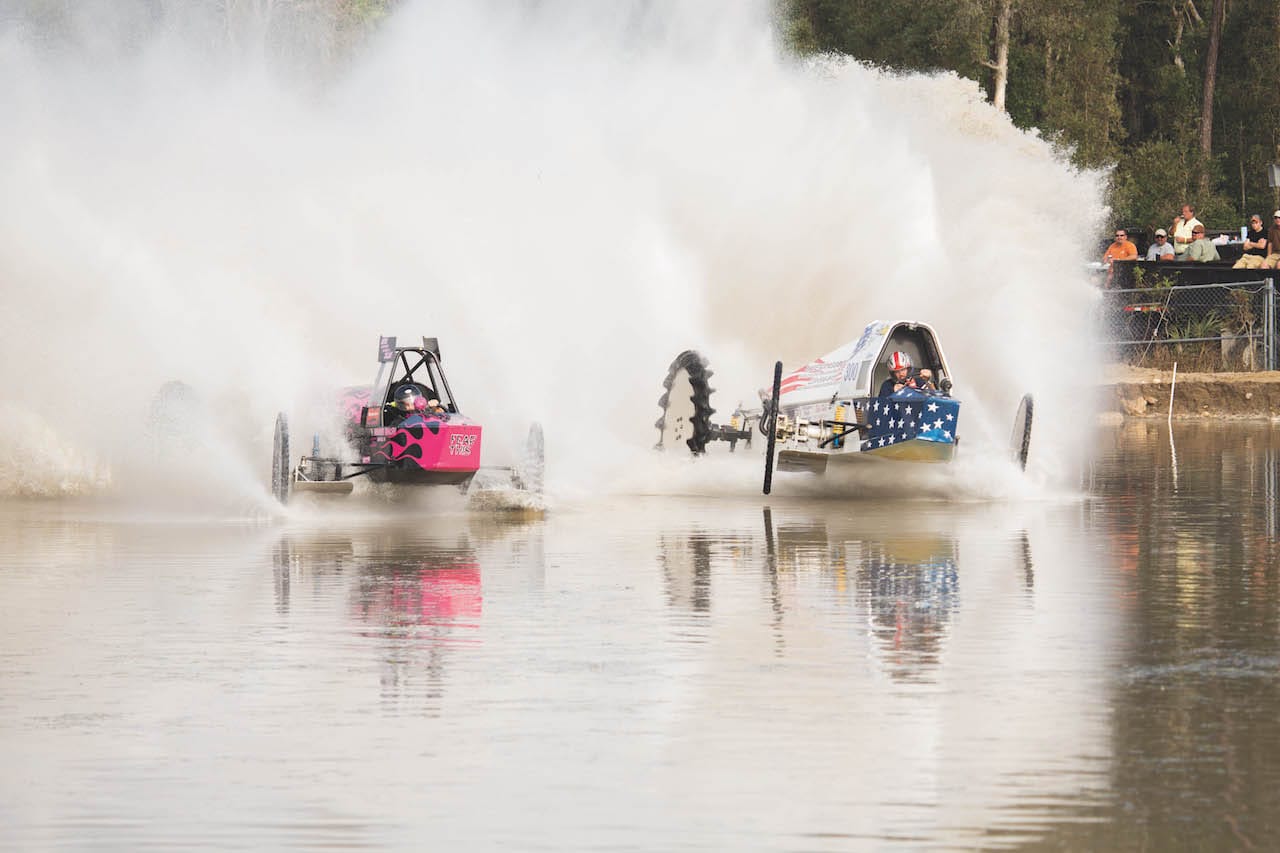
The distinctly Floridian tradition of swamp buggy racing is like a messier version of NASCAR. Custom-built buggies with names like “Gator Rebel” and “War Jeep” speed through muddy bogs to compete for the title of Swamp Buggy King. Part boat, part dragster, and often painted red, white, and blue, these homespun buggies look like something from an American parody of Mad Max: Fury Road.
The sport originated in Naples, Florida, where photographer Malcolm Lightner grew up attending the annual Swamp Buggy Parade at the locally famous “Mile O’ Mud” racetrack. Lightner comes from buggy-racing royalty — his great uncle, crowned Swamp Buggy King several times, helped formalize the race into an official event that launched in 1949. Eventually, Lightner left the trailer park of his youth to pursue a photography career. But in 2002, he returned to Naples to document its annual buggy races. And he kept returning, for 10 years, to “pay homage to my family heritage and to document a rare slice of Americana.” Slated to be published next month by PowerHouse, Mile O’ Mud: The Culture of Swamp Buggy Racing, Lightner’s first monograph, offers a rare look at a sporting culture that’s largely unknown outside the Southern US.
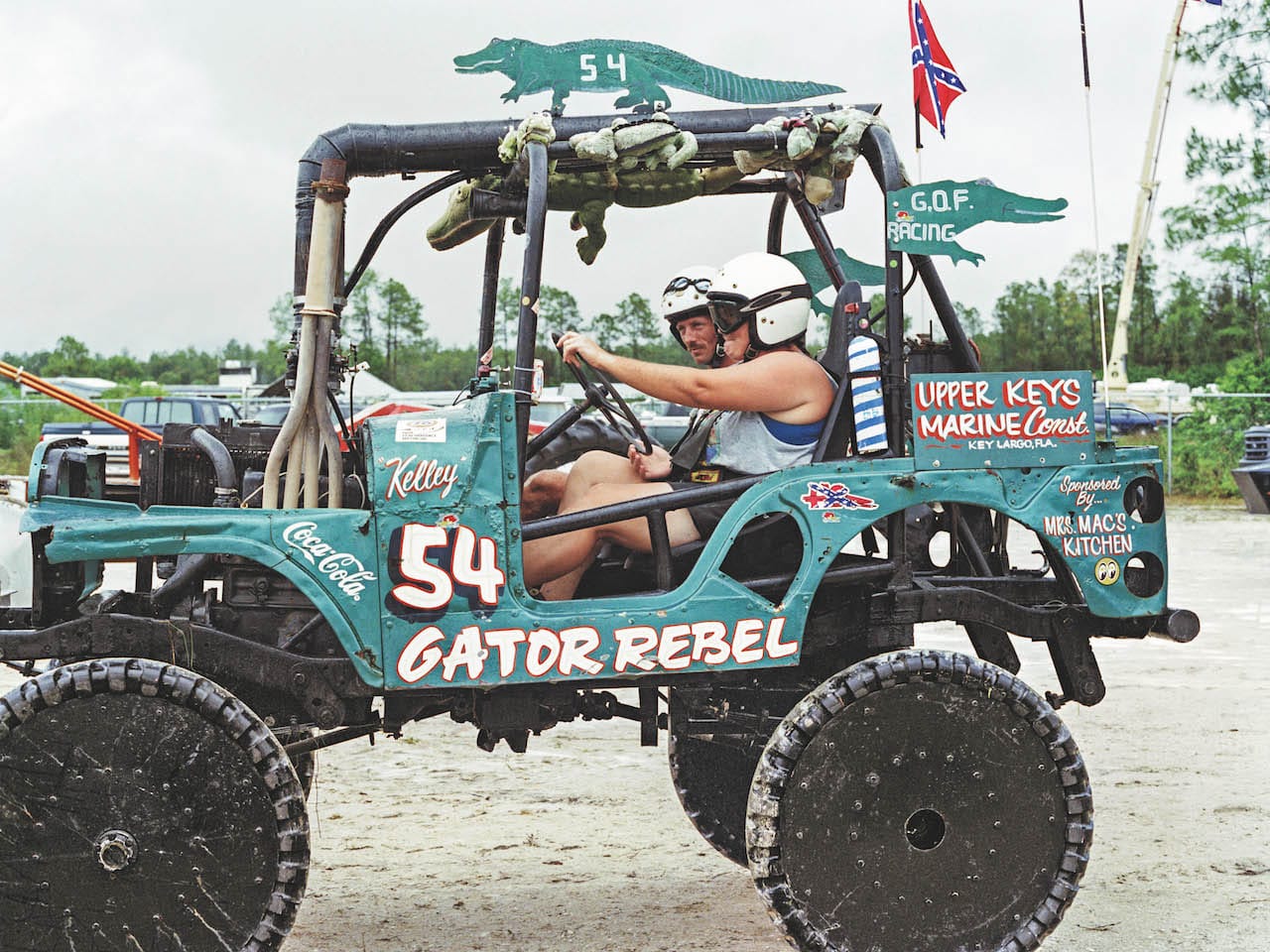
“I came to understand Swamp Buggy Racing as a metaphor for life’s daily struggles and the innate drive to overcome obstacles against great odds while trying to maintain a sense of humor and grace,” Lightner writes in the book. “The races demonstrated to me the all-American desire to compete to win, as well as the power of family and community.”
As a photographer, Lightner was initially attracted to the ingenuity of the buggy designs and the sheer spectacle of the races. Of the seven types of swamp buggies, the most common is the Jeep class, which bobs along at up to 40 miles per hour through the muddy water, often with nothing visible except its snorkels and the driver’s helmet. There’s also the Pro-Modified, with four-foot wheels, which “looks like a giant Pinewood Derby car that has met Big Daddy Roth; the body resembles an airplane fuselage,” as Floridian novelist Padgett Powell writes in the book. These can reach 75 miles per hour, spewing massive rooster tails of brown mud in their wakes.
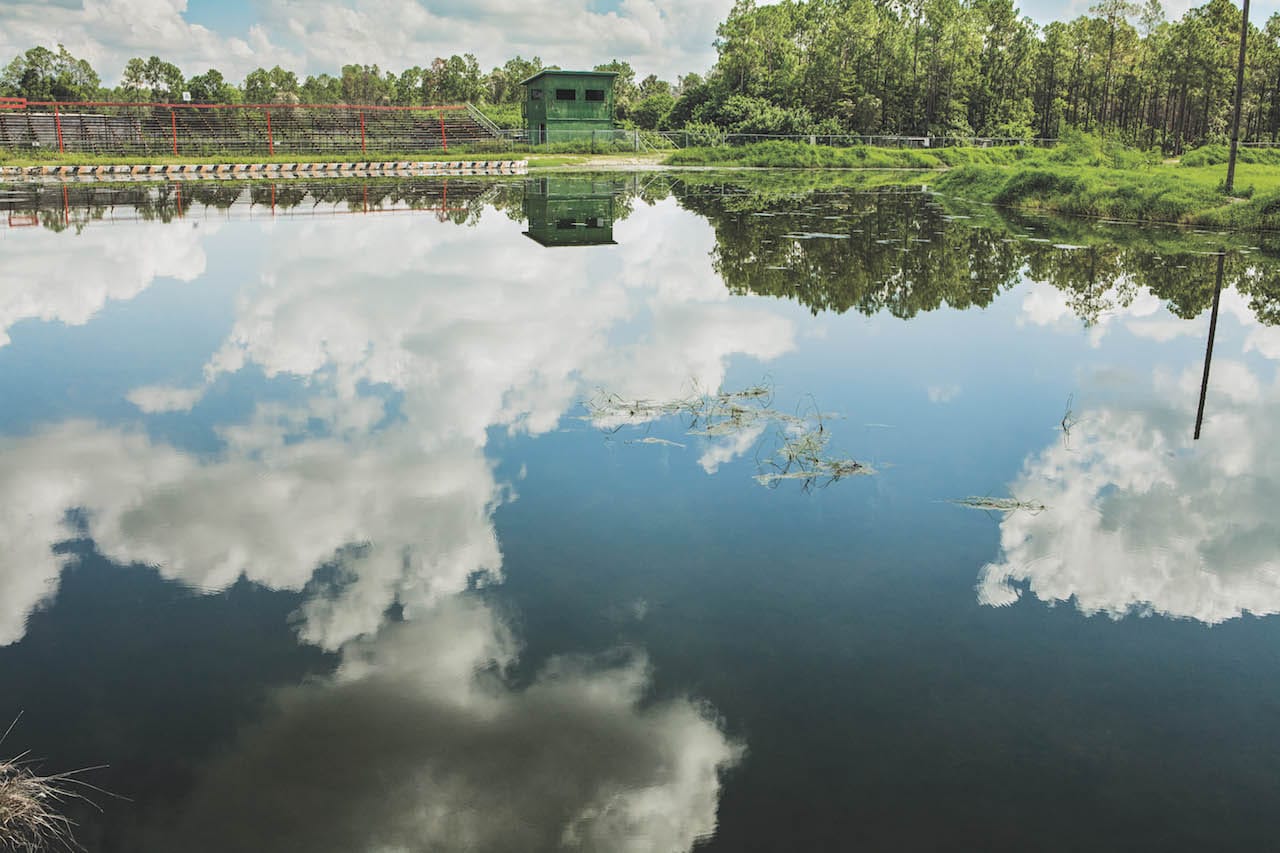
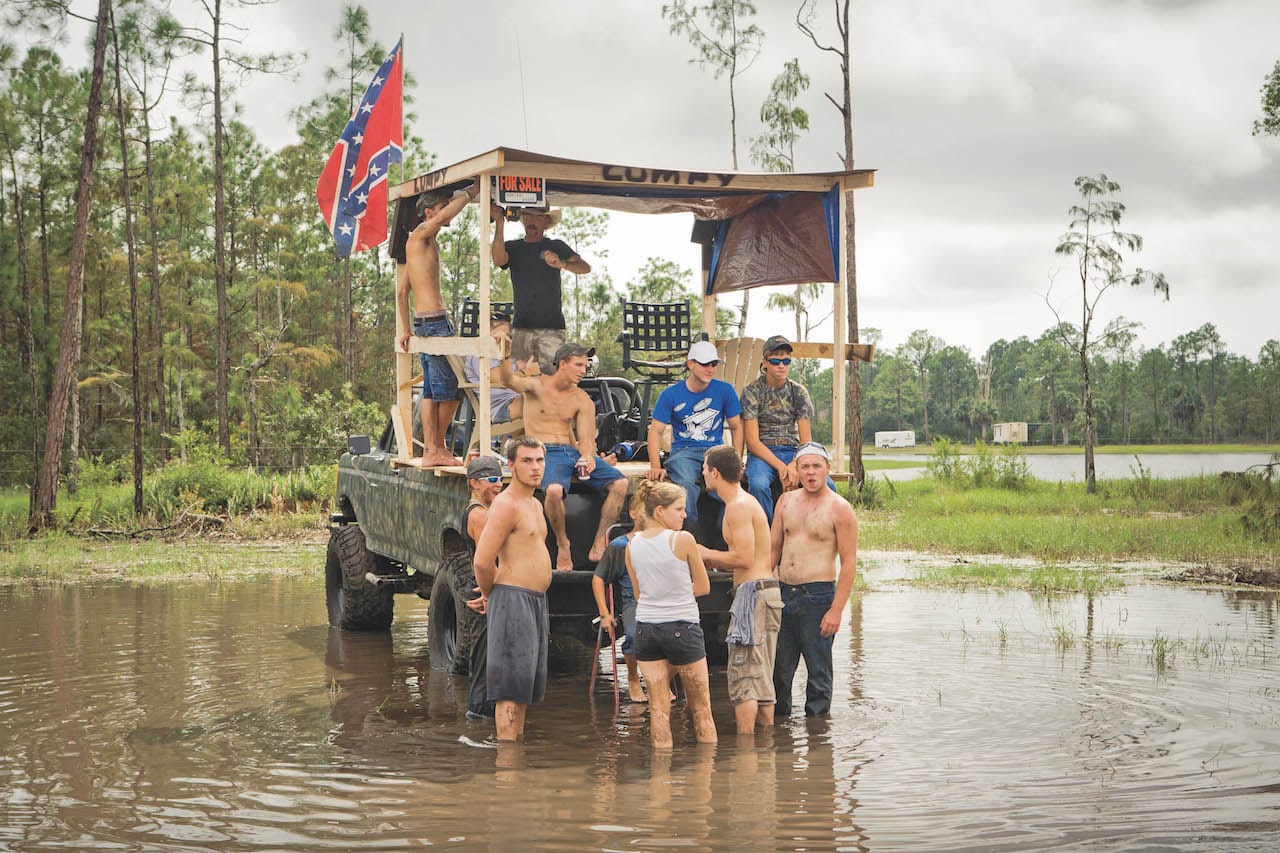
Lightner soon shifted his focus to the culture that surrounds the sport. Influenced by the likes of Walker Evans and Henri Cartier-Bresson, he photographed a girl crowned Swamp Buggy Queen posing in her tiara and sash; as the subculture’s tradition dictates, she will later get dunked in the mud. A man in an NRA hat sports a bushy beard in anticipation of the Swamp Buggy Days beard contest. The series is as much about Lightner reflecting on his roots as it is about racing itself. In his subtle, complicated “repudiation” of the South, as Powell calls it, Lightner doesn’t gloss over the darker side of the culture. Confederate flags fly from many of the buggies; a Confederate flag-decorated sign advertises the “Redneck Holiday Inn.” A decapitated alligator lies belly up in “Alligator Alley,” part of Everglades Parkway. “Going to the races has also been a bittersweet experience,” he writes. “The community and my family have seen better times.”
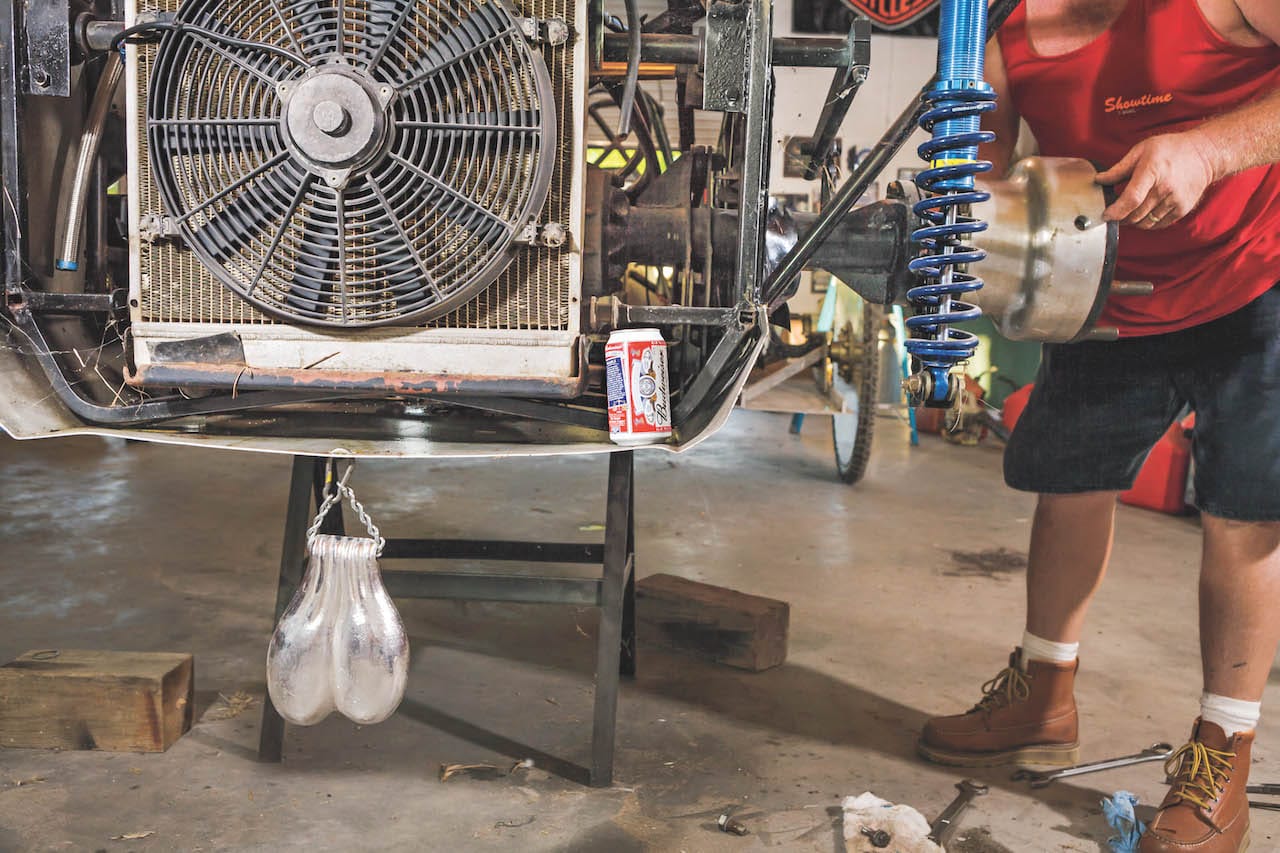
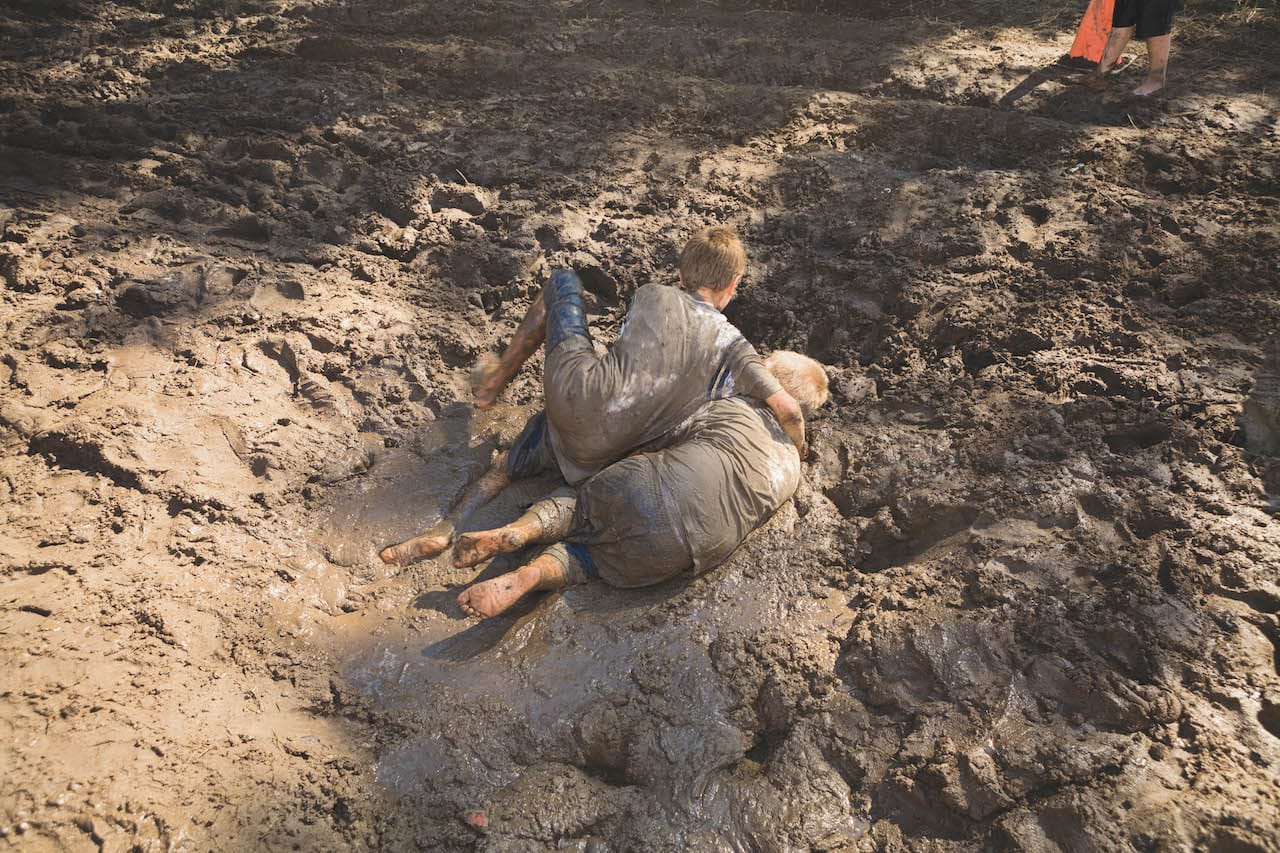



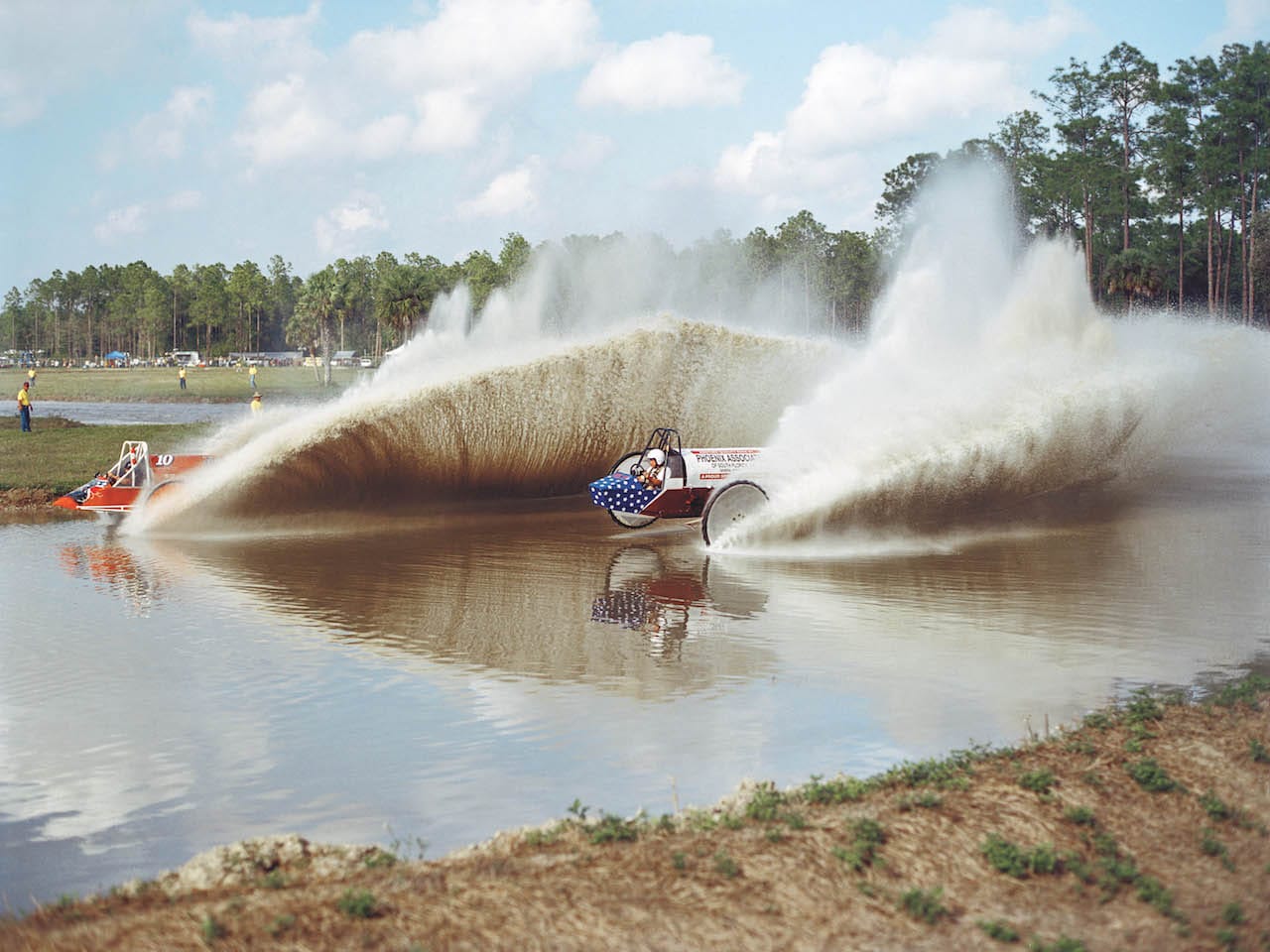
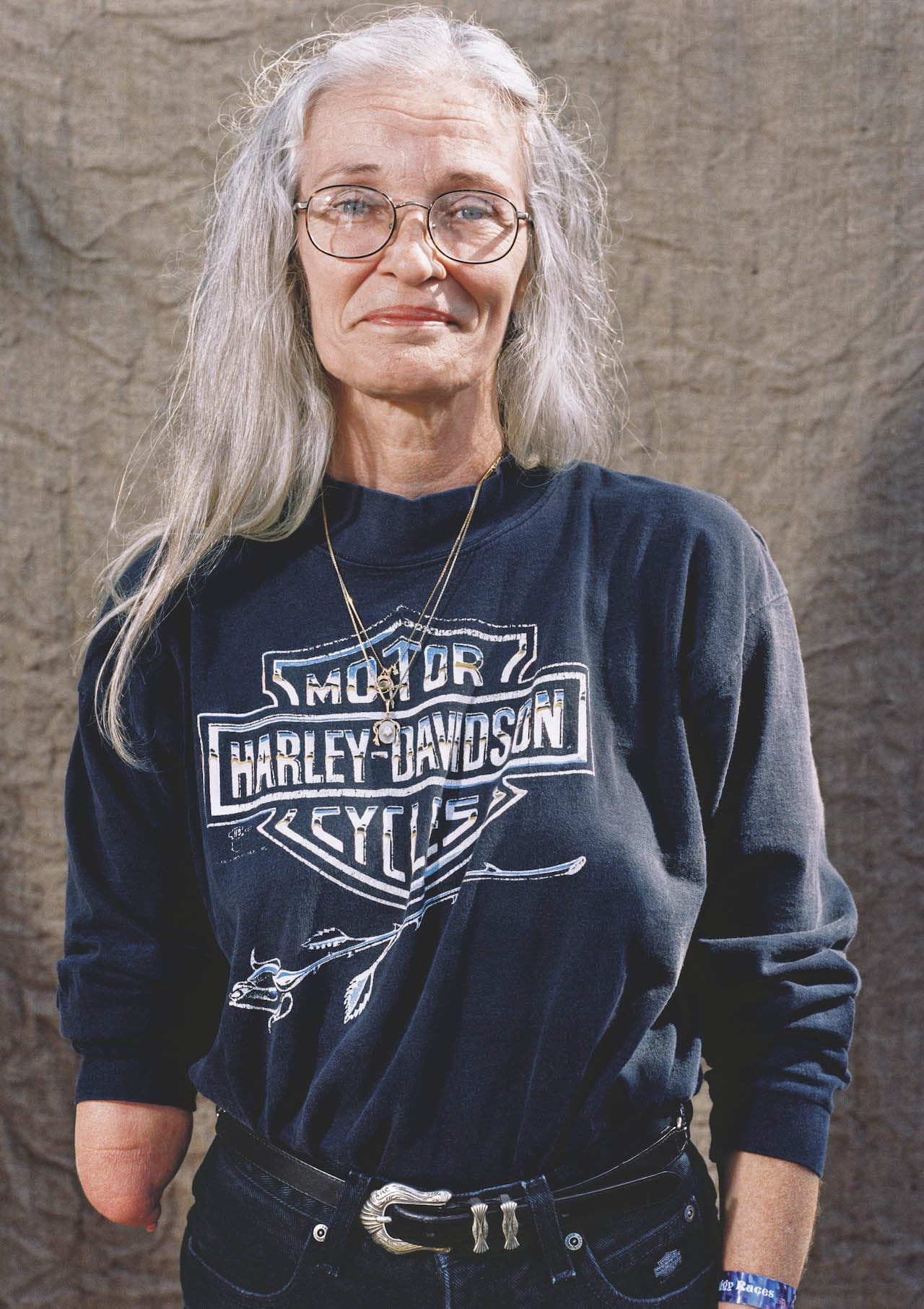
Mile O’ Mud: The Culture of Swamp Buggy Racing by Malcolm Lightner is forthcoming from PowerHouse Books and photos from the project are on view at the New Orleans Photo Alliance (1111 St. Mary Street, New Orleans, Louisiana) through May 29.





